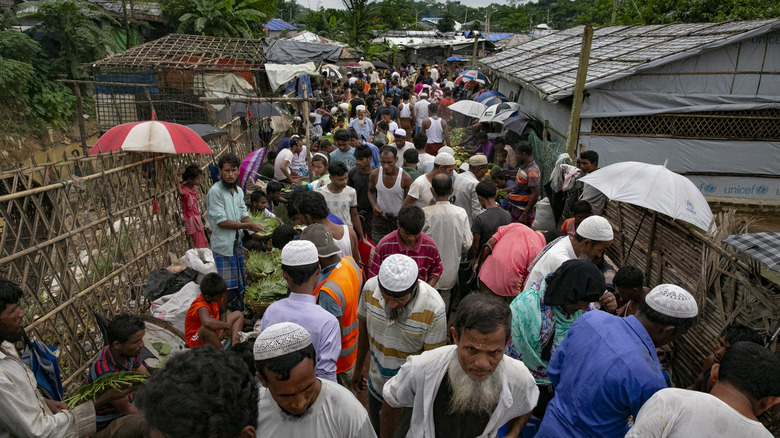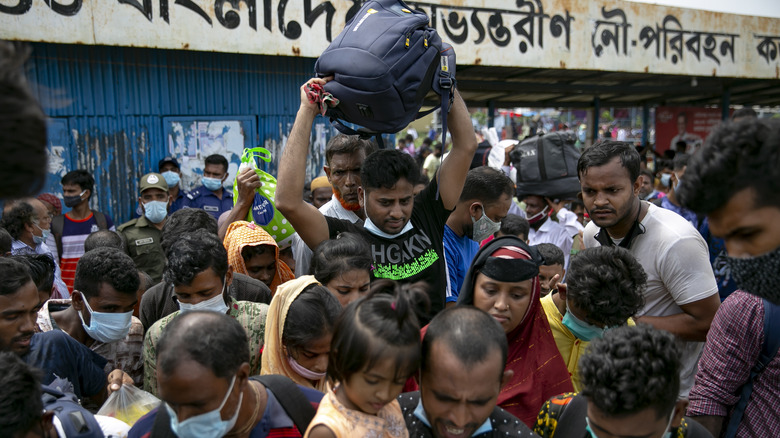Here's How Many People Live In The Most Densely Populated City On Earth
Approximately 7.9 billion people live on Earth today, and CNN reported that 37% are in China and India. China is currently the most populated country, with 1.4 billion people, followed by India with 1.3 billion. Unsurprisingly, both countries also have some of the world's most densely populated cities.
Several factors affect the number of people living in a city or country, such as politics, economy, and life quality. World Atlas reports that a town with a large number of available jobs will increase its population, while severe political and economic crises will often push people away. According to the United Nations University, climate change also became a reason for migration, and this phenomenon is expected to increase in the coming years.
Populated cities might offer more job opportunities, but it doesn't always mean an enhanced quality of life as they also have to deal with many challenges. According to the United Nations, cities are responsible for producing the largest greenhouse gas emissions globally (60%) and consume nearly 80% of the energy produced.
For many years, Manila, the capital of the Philippines, held the title of the most densely populated city on Earth. However, the title now belongs to a city in Bangladesh.
Climate change has affected life in Dhaka
According to Statista, Dhaka, Bangladesh's capital, has 36,941 residents per half a square mile, more than any other city in the world. The city saw its population increase from 1.7 million to 21.7 million in just five decades. According to The Daily Star, people moved to Dhaka trying to escape poverty in the country's rural areas.
However, because this wasn't an anticipated increase, Dhaka wasn't ready for it. In 2018, the city received an average of 2,000 new inhabitants per day, and at least three million people live in the city's slums (via Business Insider).
The city often makes the headlines due to poor working conditions. Countless people in Dhaka work in garment factories, where the salaries are low, and the environment is often unsafe. In 2013, over a thousand people died when a factory collapsed, and 2,600 were injured (via The New York Times), illustrating that sometimes more jobs, unfortunately, don't lead to a better life.

